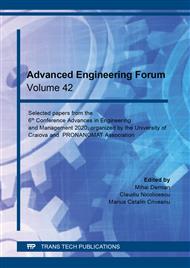p.3
p.9
p.17
p.24
p.30
p.36
p.42
p.50
p.57
Effect of Aqueous Milling on the Total Carbon Content of Hard Metal Powders
Abstract:
Materials consisting of a hard phase, usually WC, and a tough binder, traditionally Co, form the most successful class of composite materials, also known as Hard Metals (HM) or Cemented Carbides. Powder metallurgy routes are employed generally for the production of such [1]. The typical processing route of such materials involves mixing the components, kneading and consolidation. Alcohols, alkanes and alkenes are commonly used to limit any excessive heating and oxidation of powders during mixing the components. In this study, we report the results of milling in a more environmentally friendly aqueous milling media. The obtained results are presented comparatively with milling under a traditional media, such as isohexane and acetone. The characterization of the milled samples has been done from the structural, compositional and morphological point of view. Considering our previous results, an important aspect of the milled powder is the carbon content, which dictates the sintering behavior of such parts. The carbon balance investigation performed on a carbon analyzer has revealed no significant differences upon changing the milling media. This work emphasizes the influence of the milling media on the HM powder. HM powders with similar properties have been obtained both by traditional and aqueous milling. The comparative study has revealed that the substitution of the traditional milling media does not influence the carbon content in the HM powder.
Info:
Periodical:
Pages:
3-8
Citation:
Online since:
September 2021
Authors:
Keywords:
Price:
Permissions:
Сopyright:
© 2021 Trans Tech Publications Ltd. All Rights Reserved
Share:
Citation:


